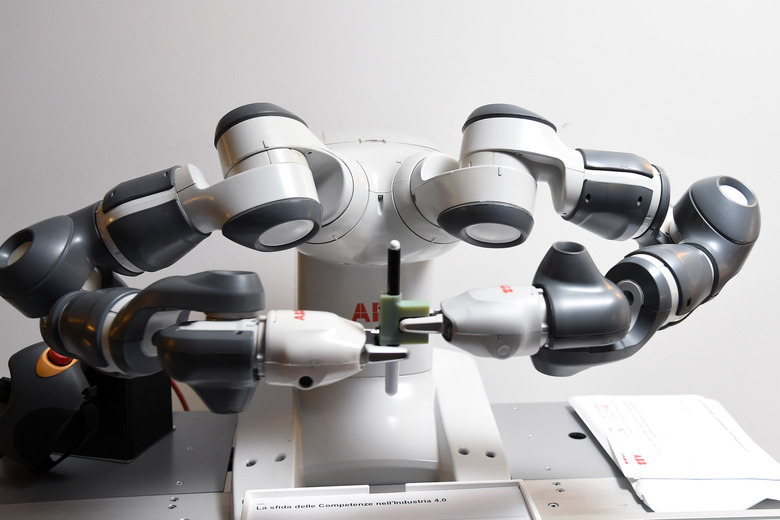This Flexible Robot Can Grow Like A Plant
What if you could grow at will? Extend your arms to reach that top shelf in the pantry, or your legs to fit those pants you still haven't gotten hemmed – but then shrink back to your usual size for comfy armchairs or cramped airplane seats.
Well, while we humans are still a ways away from that kind of superpower, robots aren't. In fact, MIT scientists have developed a robot that can grow, much like a plant.
What it Does
What it Does
MIT researchers presented their new growing robot at the IEEE International Conference on Intelligent Robots and Systems in November, according to a press release from the university. The robot features a chain-like appendage, which is flexible enough to turn and twist but rigid and strong enough to support heavy loads and assemble parts in tight spaces.
The robot can extend its appendage to take on projects that need it, such as grabbing an object from the back of a tall shelf or maneuvering around the parts of a car engine to remove an oil cap, according to the release.
Harry Asada, mechanical engineering professor at MIT, said the robot is advanced enough to change the oil in a car – a tricky task, without the ability to grow and turn.
"After you open the engine roof, you have to be flexible enough to make sharp turns, left and right, to get to the oil filter," Asada said in MIT's press release. "And then you have to be strong enough to twist the oil filter cap to remove it."
Now, Asada and his team have a robot that can potentially complete such tasks.
How it Works
How it Works
Engineers designed the robot's extendable appendage with plants in mind, considering how plants grow by transporting fluidized nutrients to the tip of their stems. This fluid then changes into solid material to produce a supportive stem, step by step.
Similarly, this robot features a "growing point," which somewhat resembles a bicycle chain. According to reporting from TechCrunch, the robot can pull in its appendage and pack it loosely in a container, then regrow it as needed.
The robot begins to resolve what roboticists have dubbed the "last foot" problem, which involves getting robots to go from working out in the open to working in tight, confined places. New Atlas reported that MIT's new technology can support grippers, cameras and other sensors weighing up to 1 pound, which previous attempted solutions for this problem were unable to do.
"Unlocking this kind of flexibility for industrial robotics could go a long way to opening up entirely new and more varied applications of robots on the job," Darrell Etherington wrote for TechCrunch. "The development of these kinds of 'grobots' definitely has plenty of potential outside of the lab."
Cite This Article
MLA
Swanston, Brenna. "This Flexible Robot Can Grow Like A Plant" sciencing.com, https://www.sciencing.com/plant-like-robot-13723036/. 18 November 2019.
APA
Swanston, Brenna. (2019, November 18). This Flexible Robot Can Grow Like A Plant. sciencing.com. Retrieved from https://www.sciencing.com/plant-like-robot-13723036/
Chicago
Swanston, Brenna. This Flexible Robot Can Grow Like A Plant last modified March 24, 2022. https://www.sciencing.com/plant-like-robot-13723036/
